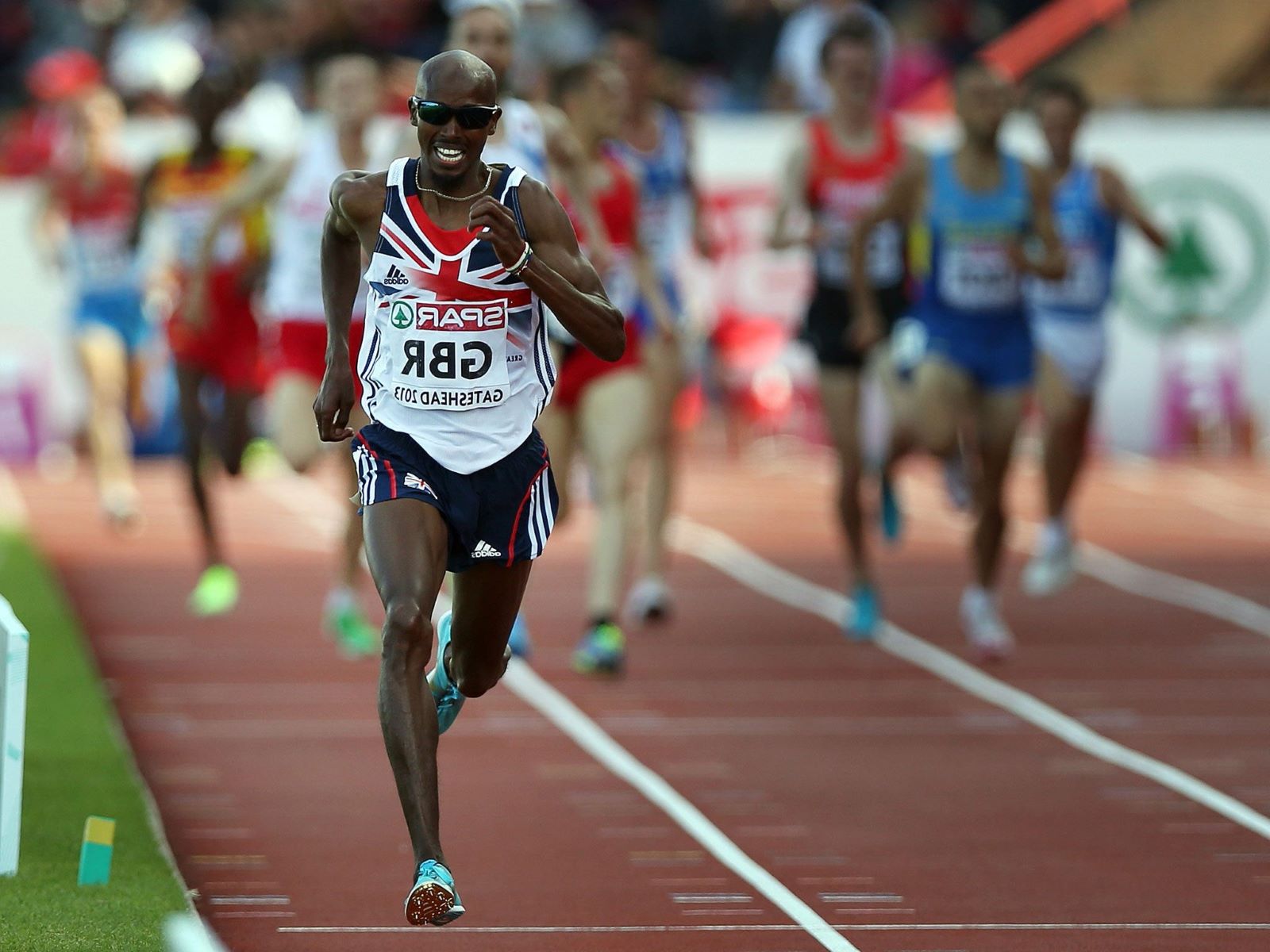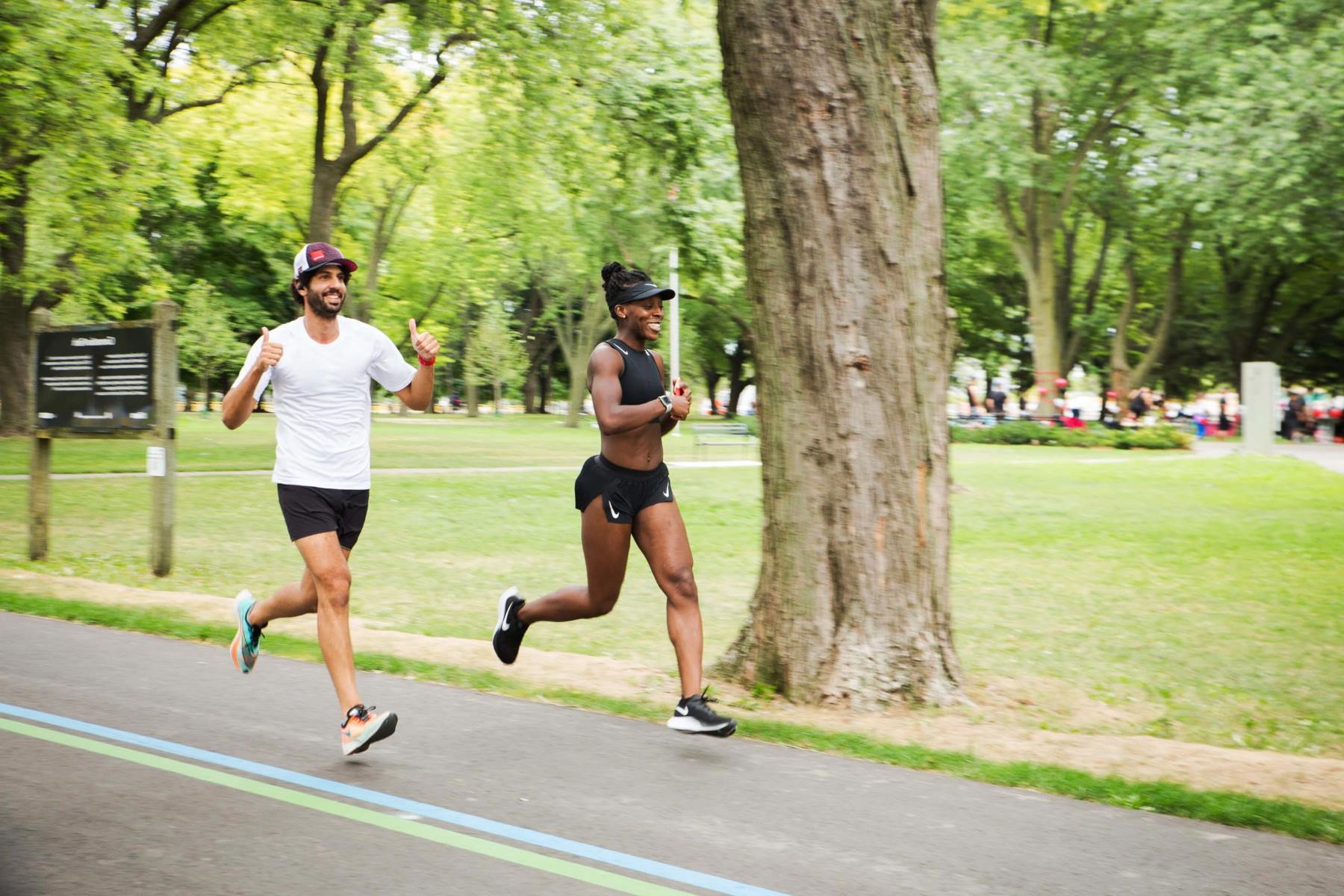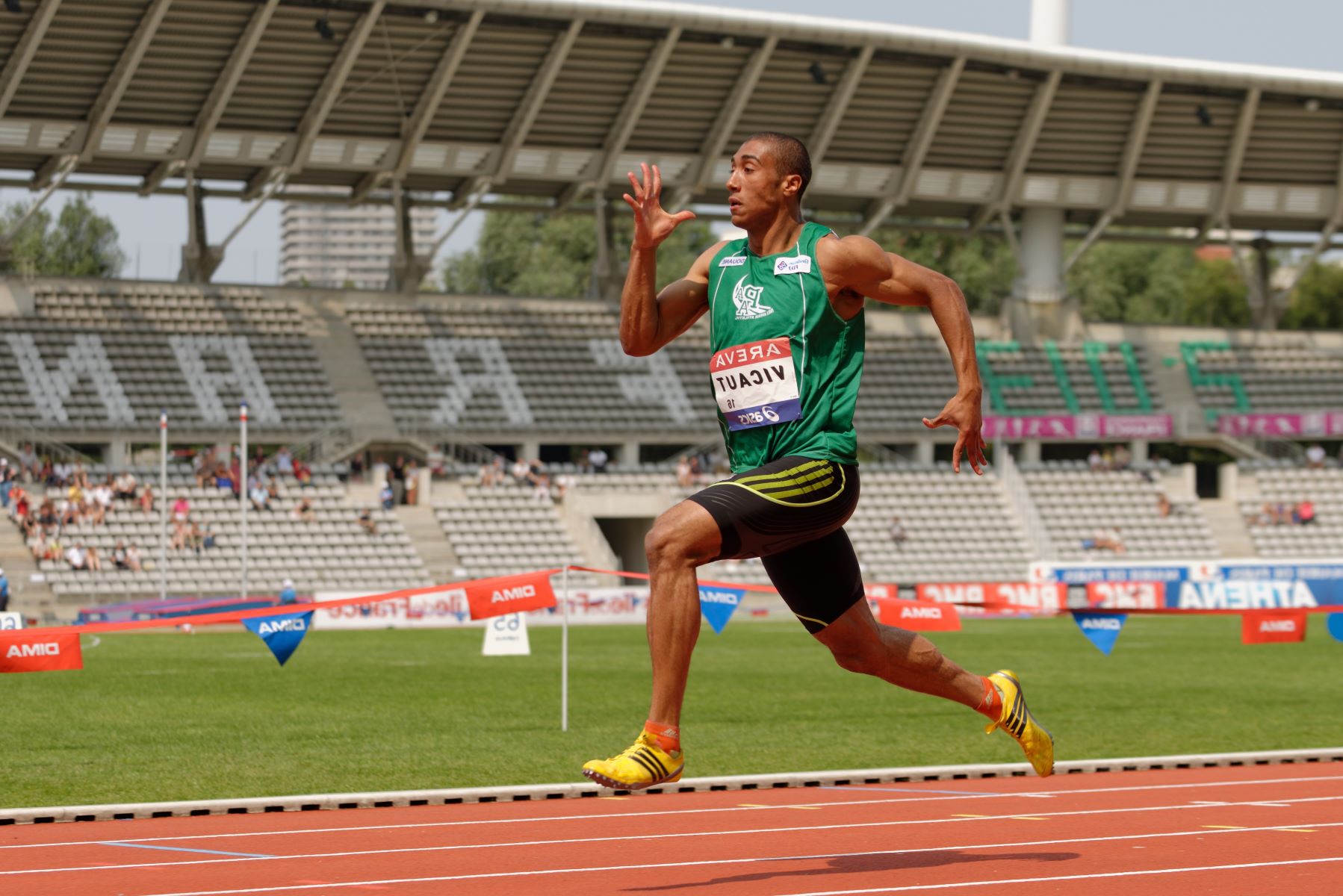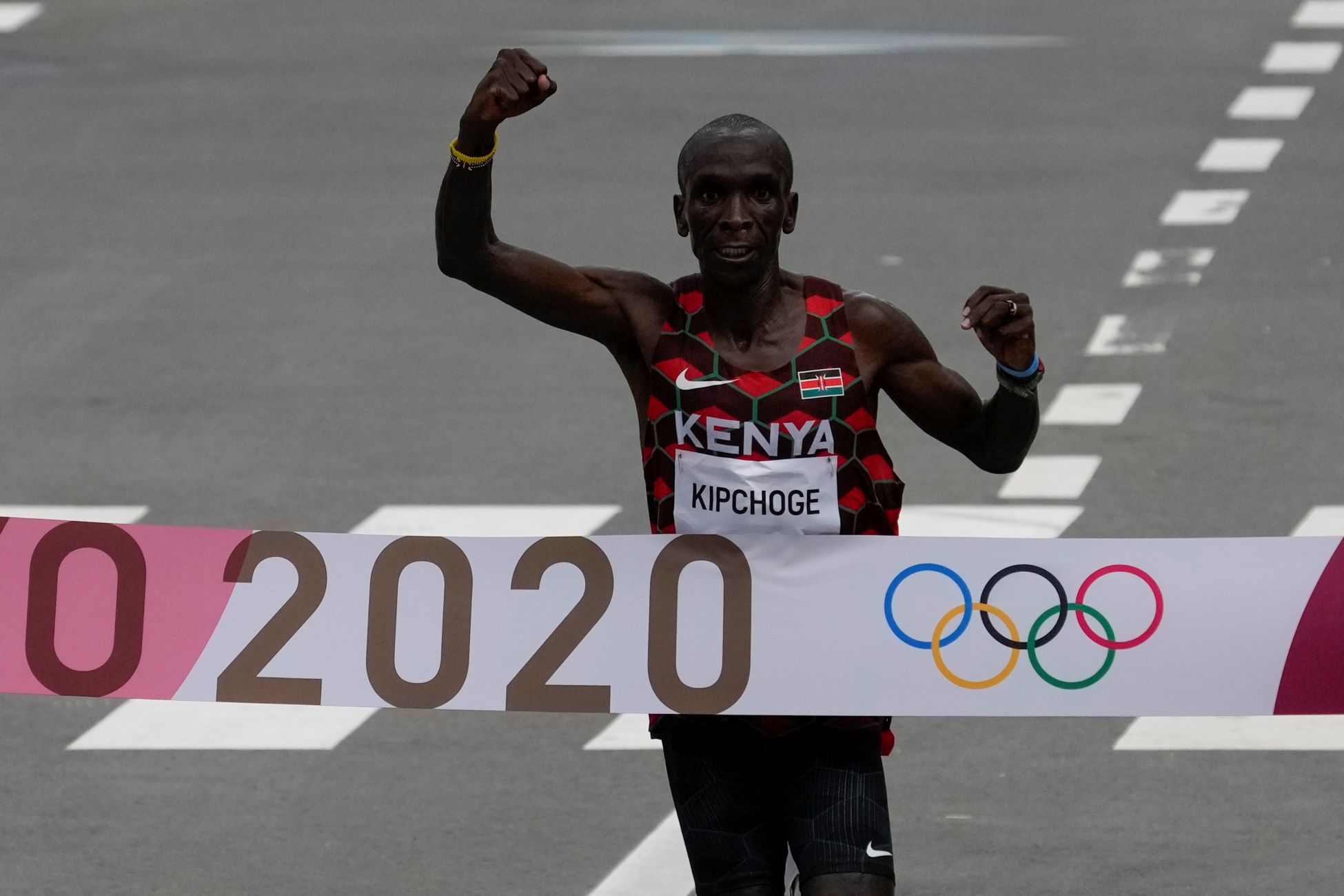Home>Community & Lifestyle>Runner Profiles>Mo Farah’s Speed: How Fast Does He Run?


Runner Profiles
Mo Farah’s Speed: How Fast Does He Run?
Published: February 29, 2024
Discover Mo Farah's incredible speed and running prowess in our comprehensive runner profile. Learn how fast he runs and what makes him a standout athlete. Explore more runner profiles on our site.
(Many of the links in this article redirect to a specific reviewed product. Your purchase of these products through affiliate links helps to generate commission for Therunningadvisor.com, at no extra cost. Learn more)
Table of Contents
Mo Farah's Training Regimen
Mo Farah, a renowned long-distance runner, has achieved remarkable success through his rigorous and meticulously crafted training regimen. His training program is a testament to the dedication and discipline required to excel in the world of professional running.
Read more: Mo Farah’s Dietary Choice: Is He A Vegan?
Consistency and Volume
Farah's training regimen revolves around consistency and high volume. He consistently logs a high number of miles each week, building a strong aerobic base that is essential for long-distance running. His training routine often includes multiple daily sessions, with a focus on both quantity and quality.
Endurance and Stamina
To excel in events such as the 5,000 meters and 10,000 meters, Farah places a strong emphasis on developing endurance and stamina. This involves long runs at a steady pace, often covering extensive distances to enhance his cardiovascular capacity and muscular endurance.
Speed Work
In addition to building endurance, Farah incorporates speed work into his training regimen. This includes interval training, tempo runs, and track workouts aimed at improving his overall speed and race pace. By alternating between periods of high-intensity effort and recovery, he hones his ability to sustain a swift pace over extended distances.
Strength and Conditioning
Farah's training regimen also encompasses strength and conditioning exercises to fortify his muscles and prevent injuries. These may involve weight training, plyometric exercises, and core strengthening routines to enhance his overall physical resilience and running efficiency.
Read more: Does The Cold Affect Your Running Speed?
Altitude Training
Farah often incorporates altitude training into his regimen, taking advantage of the physiological adaptations that occur at higher elevations. By exposing himself to reduced oxygen levels, he stimulates the production of red blood cells, ultimately enhancing his oxygen-carrying capacity and overall endurance.
Recovery and Rest
Crucially, Farah recognizes the significance of adequate rest and recovery in optimizing performance. His training regimen includes scheduled rest days and active recovery sessions, allowing his body to recuperate and adapt to the demands of his intense workouts.
Mo Farah's training regimen is a testament to the meticulous planning and unwavering commitment required to achieve and maintain peak performance in long-distance running. By integrating elements of endurance, speed, strength, and recovery, he has honed his physical capabilities to become a dominant force in the world of distance running.
The Science Behind Mo Farah's Running Speed
Mo Farah's exceptional running speed is a result of a complex interplay of physiological, biomechanical, and psychological factors. Understanding the science behind his remarkable speed provides valuable insights into the intricacies of elite long-distance running.
Biomechanics and Running Economy
Farah's running speed is underpinned by efficient biomechanics and superior running economy. His ability to minimize energy expenditure while maintaining a swift pace is a defining aspect of his performance. Biomechanical analyses have revealed his proficiency in optimizing stride length, frequency, and foot strike patterns to maximize propulsion and minimize ground contact time. This efficient running technique allows him to cover ground with remarkable speed and minimal energy wastage.
Aerobic Capacity and Oxygen Utilization
Farah's exceptional running speed is closely linked to his remarkable aerobic capacity and oxygen utilization. His cardiovascular system exhibits exceptional efficiency in delivering oxygen to working muscles, allowing for sustained high-intensity efforts over extended distances. Through targeted training, Farah has enhanced his VO2 max, the maximum amount of oxygen his body can utilize during exercise, enabling him to maintain an impressive pace throughout races.
Muscle Fiber Composition and Endurance
The composition of Farah's muscle fibers significantly contributes to his running speed and endurance. His muscles are rich in slow-twitch fibers, which are well-suited for prolonged, aerobic activities such as long-distance running. These fibers provide the necessary endurance capabilities, allowing Farah to sustain his speed over extended distances without succumbing to fatigue.
Mental Resilience and Race Strategy
Beyond the physiological aspects, Farah's mental resilience and strategic race approach play a pivotal role in his running speed. His ability to maintain focus, manage discomfort, and execute tactical race moves sets him apart from his competitors. By leveraging psychological strategies, such as positive self-talk and visualization, Farah optimizes his performance and sustains his exceptional speed throughout races.
Integrated Training and Adaptations
Farah's training regimen is meticulously designed to elicit specific physiological adaptations that enhance his running speed. Through a carefully integrated approach encompassing aerobic conditioning, speed work, strength training, and recovery strategies, his body undergoes targeted adaptations that optimize his running performance. This comprehensive training methodology ensures that Farah's physiological systems are finely tuned to support his extraordinary speed and endurance.
In essence, the science behind Mo Farah's running speed encompasses a multifaceted interplay of biomechanical efficiency, exceptional aerobic capacity, muscular endurance, mental fortitude, and targeted training adaptations. This holistic understanding underscores the intricate blend of physiological and psychological elements that culminate in Farah's extraordinary speed and success on the track.
Mo Farah's Speed in Different Race Distances
Mo Farah's versatility as a long-distance runner is exemplified by his exceptional speed across various race distances. His prowess extends from the track to road races, showcasing remarkable consistency and competitiveness regardless of the event's length. Farah's speed is a defining attribute that has propelled him to victory in a wide array of races, each demanding distinct strategies and physiological adaptations.
1500 Meters and Mile Races
In shorter distance events such as the 1500 meters and mile races, Farah's speed is showcased through explosive bursts of acceleration and tactical maneuvering. Despite being known for his dominance in longer distances, Farah's ability to unleash formidable speed over these shorter races is a testament to his well-rounded capabilities as a runner. His adeptness at navigating tight packs and executing decisive kicks in the closing stages of these races underscores his versatility and speed-endurance balance.
5000 Meters
Farah's speed in the 5000 meters is characterized by a harmonious blend of sustained pace and strategic surges. His ability to maintain a swift tempo throughout the race, while seamlessly responding to changes in pace initiated by competitors, reflects his exceptional speed-endurance continuum. Farah's capacity to unleash a potent finishing kick in the closing laps of the 5000 meters is a testament to his remarkable speed reserves, often leaving his rivals trailing in his wake.
10,000 Meters
In the grueling 10,000 meters, Farah's speed is showcased through his ability to sustain a relentless pace over 25 laps of the track. His consistent and controlled speed throughout the race, coupled with the mental fortitude to withstand surges from opponents, underscores his exceptional running economy and aerobic capacity. Farah's speed in the 10,000 meters is a testament to his ability to maintain an unwavering tempo, gradually wearing down his competitors with his relentless speed and tactical acumen.
Road Races and Half Marathons
Farah's transition to road races and half marathons has further highlighted his exceptional speed across varied terrains. His ability to adapt his speed to undulating courses and unpredictable race dynamics underscores his versatility as a runner. Farah's speed in road races is characterized by a seamless fusion of track-honed pace control and the adaptability required to excel in longer, non-standardized race settings.
In essence, Mo Farah's speed transcends the confines of specific race distances, encompassing a spectrum of events that underscore his exceptional versatility and speed-endurance balance. His ability to seamlessly transition from explosive bursts of speed in shorter races to sustained, controlled tempo in longer distances exemplifies the depth of his speed capabilities, solidifying his status as one of the most versatile and accomplished long-distance runners of his generation.
Factors Affecting Mo Farah's Running Speed
Mo Farah's remarkable running speed is influenced by a myriad of interconnected factors that collectively contribute to his exceptional performance on the track and road. These factors encompass a blend of physiological, psychological, and environmental elements, each playing a pivotal role in shaping Farah's speed and endurance capabilities.
Physiological Factors
Aerobic Capacity and VO2 Max
Farah's exceptional aerobic capacity and high VO2 max significantly impact his running speed. His body's ability to efficiently utilize oxygen during exercise allows for sustained high-intensity efforts, enabling him to maintain an impressive pace throughout races.
Muscle Fiber Composition
The composition of Farah's muscle fibers, particularly the prevalence of slow-twitch fibers, enhances his endurance and contributes to his sustained running speed over long distances. These fibers are well-suited for prolonged, aerobic activities, providing the necessary resilience to maintain speed without succumbing to fatigue.
Biomechanical Efficiency
Farah's biomechanical efficiency, including optimized stride length, frequency, and foot strike patterns, minimizes energy expenditure while maximizing propulsion. This efficient running technique allows him to cover ground with remarkable speed and minimal energy wastage.
Psychological Factors
Mental Resilience and Focus
Farah's mental resilience and unwavering focus play a crucial role in sustaining his running speed. His ability to manage discomfort, stay focused during races, and execute strategic race moves contributes to maintaining his exceptional speed throughout competitions.
Race Strategy and Tactical Acumen
Farah's strategic race approach, including pacing strategies and tactical surges, influences his running speed. His adeptness at navigating race dynamics and executing decisive moves at strategic junctures showcases his tactical acumen and its impact on his overall speed.
Read more: Running For Fast Abs
Training and Adaptations
Integrated Training Regimen
Farah's meticulously designed training regimen elicits specific physiological adaptations that optimize his running speed. Through a comprehensive approach encompassing aerobic conditioning, speed work, strength training, and recovery strategies, his body undergoes targeted adaptations that enhance his speed and endurance.
Altitude Training
Incorporating altitude training into his regimen stimulates the production of red blood cells, enhancing his oxygen-carrying capacity and overall endurance. This adaptation contributes to his sustained speed and performance in races.
Environmental Factors
Race Conditions and Terrain
The environmental factors, including race conditions and terrain, can impact Farah's running speed. His adaptability to varied race settings and terrains showcases his ability to adjust his speed based on external environmental factors.
In essence, Mo Farah's running speed is a product of a complex interplay of physiological, psychological, and environmental factors. His exceptional aerobic capacity, biomechanical efficiency, mental resilience, strategic acumen, and targeted training adaptations collectively shape his remarkable speed and endurance, solidifying his status as one of the most accomplished long-distance runners in the world.
Mo Farah's Speed Compared to Other Elite Runners
Mo Farah's speed stands as a benchmark of excellence in the realm of long-distance running, positioning him among the elite runners of his generation. When comparing Farah's speed to that of other accomplished athletes, several notable distinctions and competitive dynamics come to light.
In the context of track events, Farah's speed, particularly in the 5000 meters and 10,000 meters, has set him apart as a formidable force on the global stage. His ability to sustain a swift pace while tactically outmaneuvering opponents in the closing stages of races has solidified his reputation as a dominant force. When juxtaposed with other elite runners, Farah's speed is characterized by a harmonious blend of sustained tempo and potent finishing kicks, often leaving his competitors trailing in his wake.
In road races and half marathons, Farah's transition from track events to longer distances has further showcased his adaptability and speed-endurance balance. His capacity to seamlessly transfer his speed and pacing strategies to varied terrains and race dynamics has positioned him as a versatile contender in the road racing circuit. When compared to other elite runners in these events, Farah's speed is underscored by his ability to maintain a controlled tempo over extended distances, often culminating in compelling displays of finishing speed that secure his position at the forefront of the field.
An intriguing aspect of comparing Farah's speed to that of other elite runners lies in the tactical nuances and race dynamics that unfold when these athletes compete head-to-head. Farah's strategic acumen, coupled with his exceptional speed reserves, often leads to captivating showdowns with fellow elite runners, where the interplay of speed, endurance, and mental fortitude takes center stage. These encounters serve as a testament to the multifaceted nature of speed in long-distance running, where the ability to sustain pace, execute tactical surges, and unleash finishing kicks defines the competitive landscape.
Ultimately, when evaluating Mo Farah's speed in comparison to other elite runners, it becomes evident that his exceptional blend of speed, endurance, and tactical prowess positions him as a formidable contender across a spectrum of race distances and terrains. His ability to seamlessly transition from explosive bursts of speed to sustained, controlled tempo exemplifies the depth of his speed capabilities, solidifying his status as one of the most versatile and accomplished long-distance runners of his era.











